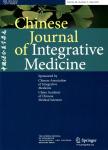Asperuloside Promotes Apoptosis of Cervical Cancer Cells through Endoplasmic Reticulum Stress-Mitochondrial Pathway
作者机构:Medical Examination CenterHebei Province Hospital of Chinese MedicineShijiazhuang(050011)China Department of Gynaecology and ObstetricsHebei Province Hospital of Chinese MedicineShijiazhuang(050011)China Experimental Center for TeachingHebei Medical UniversityShijiazhuang(050017)China
出 版 物:《Chinese Journal of Integrative Medicine》 (中国结合医学杂志(英文版))
年 卷 期:2024年第30卷第1期
页 面:34-41页
核心收录:
学科分类:1002[医学-临床医学] 100214[医学-肿瘤学] 10[医学]
主 题:asperuloside Chinese medicine cervical cancer endoplasmic reticulum stress mitochondrial damage apoptosis
摘 要:Objective: To investigate the effects of asperuloside on cervical cancer based on endoplasmic reticulum(ER) stress and mitochondrial pathway. Methods: Different doses(12.5–800 μg/mL) of asperuloside were used to treat cervical cancer cell lines Hela and CaSki to calculate the half maximal inhibitory concentration(IC_(50)) of asperuloside. The cell proliferation was analyzed by clone formation assay. Cell apoptosis, intracellular reactive oxygen species(ROS) and mitochondrial membrane potential were determined by flow cytometry. The protein expressions of cleaved-caspase-3, Bcl-2, Bax, Cyt-c, cleaved-caspase-4 and glucose-regulated protein 78(GRP78) were analyzed by Western blot. And the inhibitor of ER stress, 4-phenyl butyric acid(4-PBA) was used to treat cervical cancer cells to further verify the role of ER stress in the apoptosis of cervical cancer cells induced by asperuloside. Results: Asperuloside of 325, 650, and 1300 μg/mL significantly inhibited the proliferation and promoted apoptosis of Hela and CaSki cells(P0.01). All doses of asperuloside significantly increased intracellular ROS levels, reduced mitochondrial membrane potential, significantly reduced Bcl-2 protein expression level, and increased Bax, Cyt-c, GRP78 and cleaved-caspase-4 expressions(P0.01). In addition, 10 mmol/L 4-PBA treatment significantly promoted cell proliferation and reduced apoptosis(P0.05), and 650 μg/mL asperuloside could reverse 4-PBA-induced increased cell proliferation, decreased apoptosis and cleaved-caspase-3,-4 and GRP78 protein expressions(P0.05). Conclusion: Our study revealed the role of asperuloside in cervical cancer, suggesting that asperuloside promotes apoptosis of cervical cancer cells through ER stress-mitochondrial pathway.



